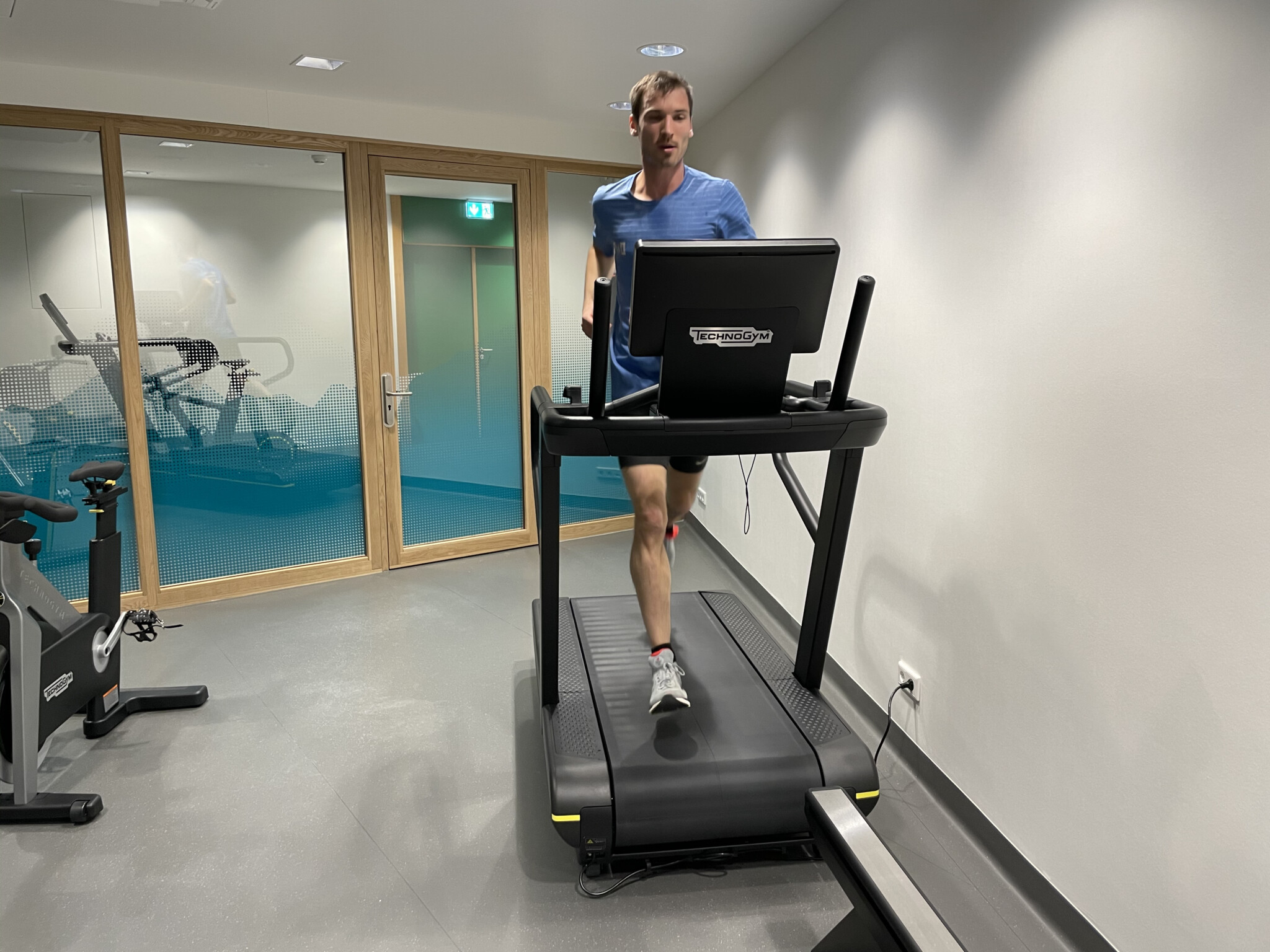
Altitude training: higher, harder, hungrier?
The picture shows track and field athlete Charel Grethen (FLA) preparing for his current altitude training camp in Kenya in the HPTRC’s altitude chamber, with the aim of shortening the adaptation period on-site and enabling higher training intensities from the start.
Altitude training camps can be part of an elite athlete’s training programs during specific training periods to improve physical performance at sea level. Typically, athletes seek out altitudes of 1600-2400 m, e.g. Flagstaff (USA, 2100 m), Font Romeu (France, 1800 m), or, like Charles Grethen, Iten (Kenia, 2400 m). The athlete’s individual response to altitude training depends on the duration of exposure, elevation and nutrient status (Michalczyk et al., 2016).
But what should be considered in terms of nutrition to support adaptations during altitude training?
Compared to sea-level training, the effectiveness of moderate (2400 m) altitude training is linked to some specific nutritional factors:
- IRON is a key micronutrient as storage decreases during altitude training while the body increases its haemoglobin mass. Female athletes are particularly affected. Supplementation through iron-rich foods (red meat, fish, eggs, vegetables, whole grains, fortified juices, beans) or daily oral supplementation should be considered to support erythropoiesis (Garvican-Lewis et al., 2016). Some sources advocate analysing blood tests prior to altitude training so that ferritin (iron) stores can be adjusted if necessary.
- ENERGY requirements are increased due to training volume and altitude. Any restrictive diets to lose body weight or fat are contra-indicated. Instead, athletes are advised to enhance energy availability (e.g. through carbohydrate containing snacks) around training to support training adaptations and training quality. To date, the increased energy requirements are explained by the higher metabolic rates: an in-between meal or eating more at main meals could help to regulate the intake.
- Higher FLUID requirements are explained by higher respiratory rates and urinary losses in hypoxic environments. Fluid intake should be spread throughout the day, as excessive drinking before bed could lead to a nocturnal fluid urge that worsens sleep quality. From the first day of training camp, athletes should limit dehydration and monitor body weight and urine colour.
- OXIDATIVE STRESS, increasing with altitude, is caused by a release of highly reactive free radicals by the muscle cells (Askew, 1995) and may increase the risk of illness and injury or impair adaptations. The efficacy and usefulness of antioxidant supplements at altitude are controversial and to date there is no consensus on supplementation during altitude camps.
- Given the current evidence, natural antioxidant sources (https://www.facebook.com/lihpslux/posts/4360122944027933) should be included in every meal. Other supplements (vitamins, minerals) may be considered before or during altitude camps if deficits can be identified and cannot be met by spontaneously increasing energy intake with a varied diet.
Follow these practical guidelines to get the most out of your altitude training camp:
- Eat at least 4 meals (3 mains + 1 or more snacks) to counterbalance the risk of poor energy availability.
- Optimise fluid and iron intakes; rehydrate quickly after each training session (iso-drink, smoothies, milkshakes).
- Iron status should be at a high level before altitude training and adjusted if necessary.
- Keep body weight stable during the training period and ensure sufficient energy and fluid intake.
- Suppressed appetite? Reduce vegetables, choose white bread instead of whole grains, prefer liquids.
Further reading:
Askew, E. W. (1995). Environmental and physical stress and nutrient requirements. American Journal of Clinical Nutrition, 61(3 SUPPL.). https://doi.org/10.1093/ajcn/61.3.631S
Michalczyk, M., Czuba, M., Zydek, G., Zając, A., & Langfort, J. (2016, June 18). Dietary recommendations for cyclists during altitude training. Nutrients, Vol. 8. https://doi.org/10.3390/nu8060377
Saunders, P. U., Garvican-Lewis, L. A., Chapman, R. F., & Périard, J. D. (2019). Special environments: Altitude and heat. International Journal of Sport Nutrition and Exercise Metabolism, 29(2), 210–219. https://doi.org/10.1123/ijsnem.2018-0256
Stellingwerff, T., Peeling, P., Garvican-Lewis, L. A., Hall, R., Koivisto, A. E., Heikura, I. A., & Burke, L. M. (2019, December 1). Nutrition and Altitude: Strategies to Enhance Adaptation, Improve Performance and Maintain Health: A Narrative Review. Sports Medicine, Vol. 49, pp. 169–184. https://doi.org/10.1007/s40279-019-01159-w


